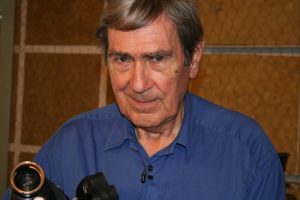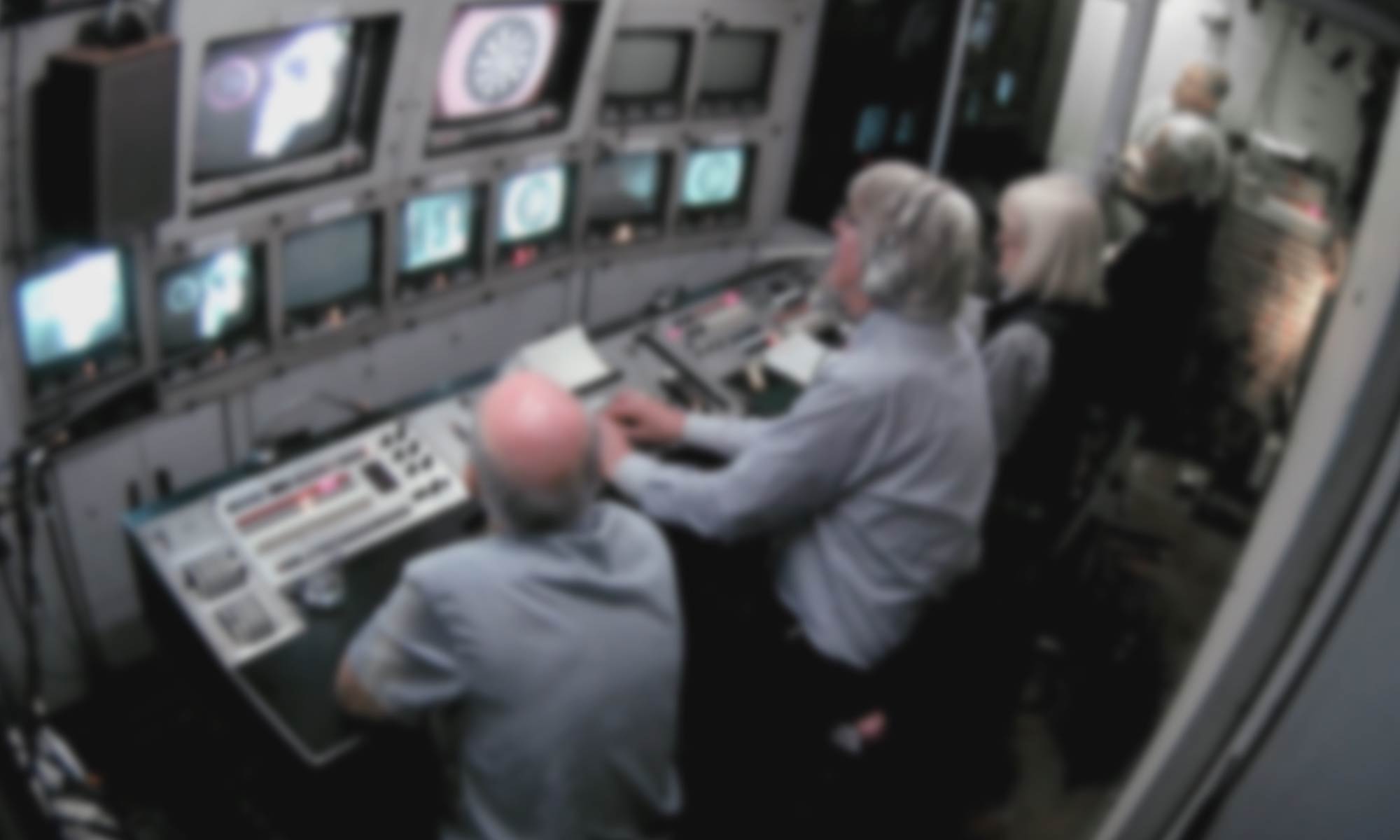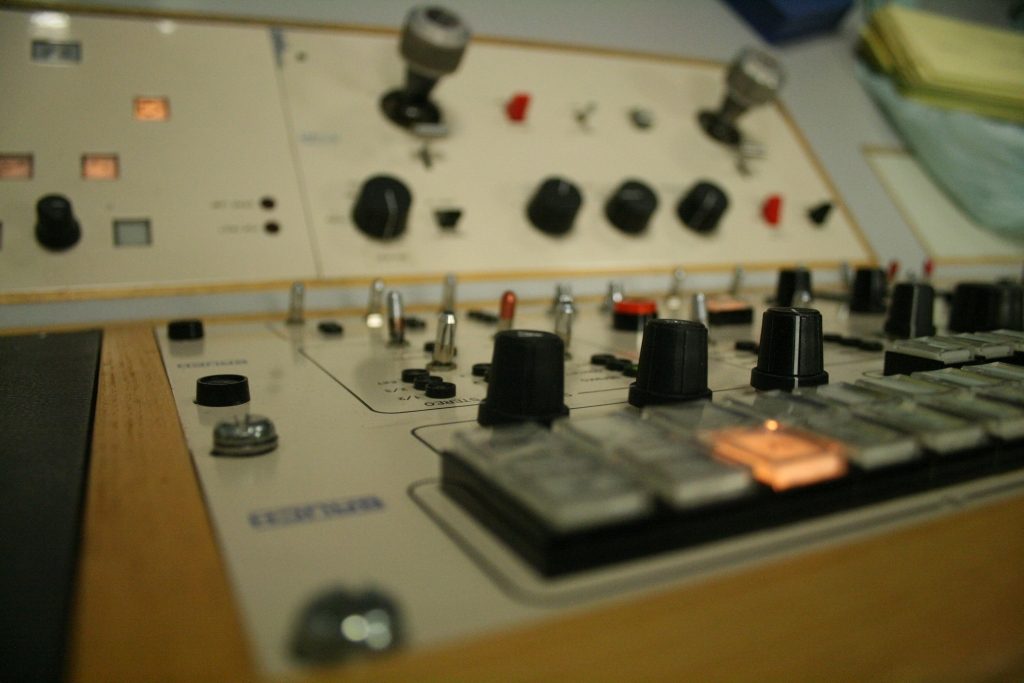Film production: making television with 16mm cameras
Today’s television cameras are based on the same technology found in modern smartphones and digital cameras. Images are captured by a light-sensitive chip inside the camera and stored as video on a memory card – or transmitted to a server in real-time for live broadcast.
In the 1960s a great deal of television was made using 16mm film cameras. These were high-precision mechanical devices using light-sensitive celluolid film. They required an entirely different approach to shooting, editing, and broadcasting footage.
The dawn of ‘sync-sound’

The most commonly used 16mm film cameras were the Arriflex 16BL and the Éclair NPR. These cameras were revolutionary because they could be synchronised with a portable tape recorder, such as a Nagra.
Working together, a 16mm film camera operator and location sound recordist could now capture synchronised images and sound.
The ability to shoot pictures with synchronised sound was a huge advantage to documentary film crews. They could use the new cameras to capture unscripted action: following politicians around a campaign trail or capturing footage of university students at a Summer Ball.
The Maysles’ brothers pioneering documentary film Primary is often regarded as one of the first TV attempts to use portable 16mm sync-sound filming. In Britain, documentary series like Man Alive and World In Action took up the new technology and used it to make ground-breaking programmes.
The challenges of 16mm filming
Brian Tufano with an Eclair 16mm film camera.
Despite this new flexibility, 16mm film cameras had many limitations. Even “lightweight” 16mm cameras were incredibly heavy by today’s standards: fitted with a lens and loaded with film, the Éclair NPR weighed over 20kgs. Batteries, spare film, and the separately-operated tape recorder added further bulk. By comparison, the JVC GY-HM650 – widely used by the BBC’s video journalists – weighs only 2.5kgs, including batteries, and does not require separate audio equipment.
Shooting on film limited the length of sequences. A standard 400ft film reel could capture only 11 minutes of footage. It would then need to be removed from the camera, and a new reel installed, before filming could continue. One camera assistant recalled his excitement at being invited to work at the FA Cup Final at Wembley Stadium, only to miss nearly all the match because he was too busy changing film reels.
Limitations such as these forced film crews to plan ahead carefully. On most filming assignments, there was no question of simply switching on the camera and filming whatever happened. 16mm film was expensive. So whenever possible sequences were carefully planned in advance.
Everyone on a crew had a clear idea of the format of the programme they were filming for, and aimed to capture a selection of shots that would enable an editor to assemble a final package. From the 1960s until the 1990s, the limitations of film cameras meant that the basic shape and form of a documentary was often decided before a single frame of film was shot.
Modern television crews are just as professional, and no less efficient. However, with high-capacity memory cards and longer-lasting batteries, they enjoy a great deal more flexibility. They can shoot a wide range of sequences and angles, and wait until “the edit” to make final decisions about what to leave out, and what to include, in the completed programme.
The 16mm life-cycle
The controls of a Rank Cintel Mark 3 telecine scanner
Unlike electronic broadcast camera and modern digital equipment, film cannot be transmitted ‘live’. Instead, exposed film must be sent to a specialist laboratory for processing, to fix the images on the negative.
Prints from these negatives, known in the industry as ‘rushes’, are then delivered to the broadcaster or production company and handed over to specialist editors who cut the raw sequences down into usable chunks and assemble them into the proper order. Editors, often working alongside sound supervisors, add sound effects and soundtracks as they work.
A finished film sequence or ‘film’ is then matched with the original negative. That is then cut by specialist ‘neg cutters’ to produce a final negative for the film. After the sound is mixed and dubbed, the finished film is handed over to a telecine operator who scans the film onto a video tape or (in more recent times) ingests footage directly into a computer server for immediate or delayed transmission on television.
In the case of complicated multi-part documentary series, this process – from shoot, to lab, to edit, to negative cut and dub, to telecine, to broadcast – can take months or years.
However, before the arrival of portable electronic broadcast television cameras, the same process was used to produce news reports.
News camera operators dispatched put exposed reels of film on trains, aircraft, or in private cars to rush them to processing labs as quickly as possible. In the case of particularly urgent footage, processed negative rushes were often telecined directly to broadcast with no or minimal editing.
While 16mm film production seems antiquated and laborious today, when surrounded by the right industrial systems it could be a surprisingly flexible and fast means of television production.
Learn more
Videos captured during ADAPT’s reenactment exercises with a 16mm television film crew, at a processing laboratory, in an edit suite, and at a telecine facility, can be found on the following pages:
- Shooting 16mm film for television
- Processing 16mm film
- Editing 16mm film for television
- Telecine: scanning film for broadcast
Learn more about the careers and experience of the veteran production staff who collaborated with the project by reading the Crew Profiles.

